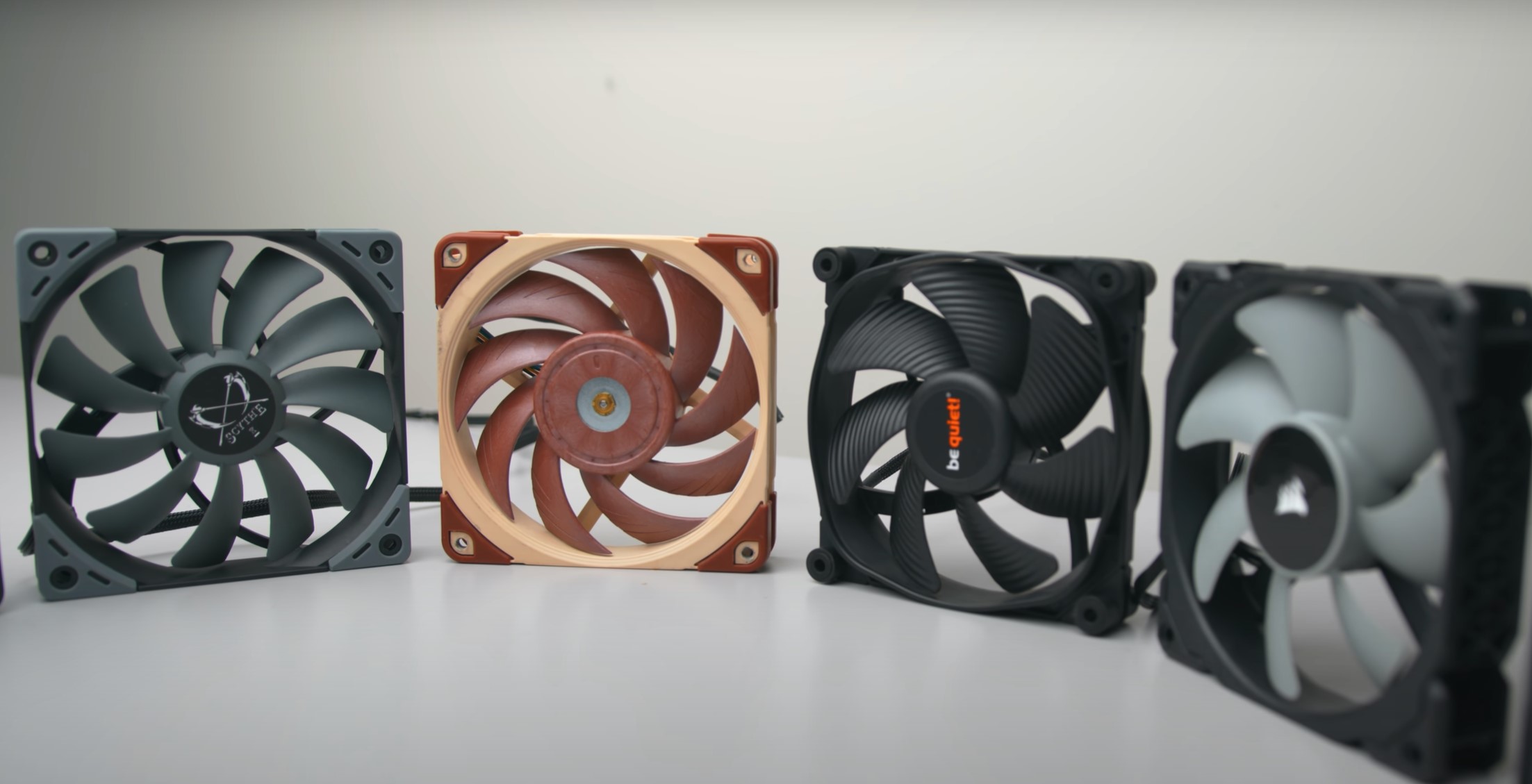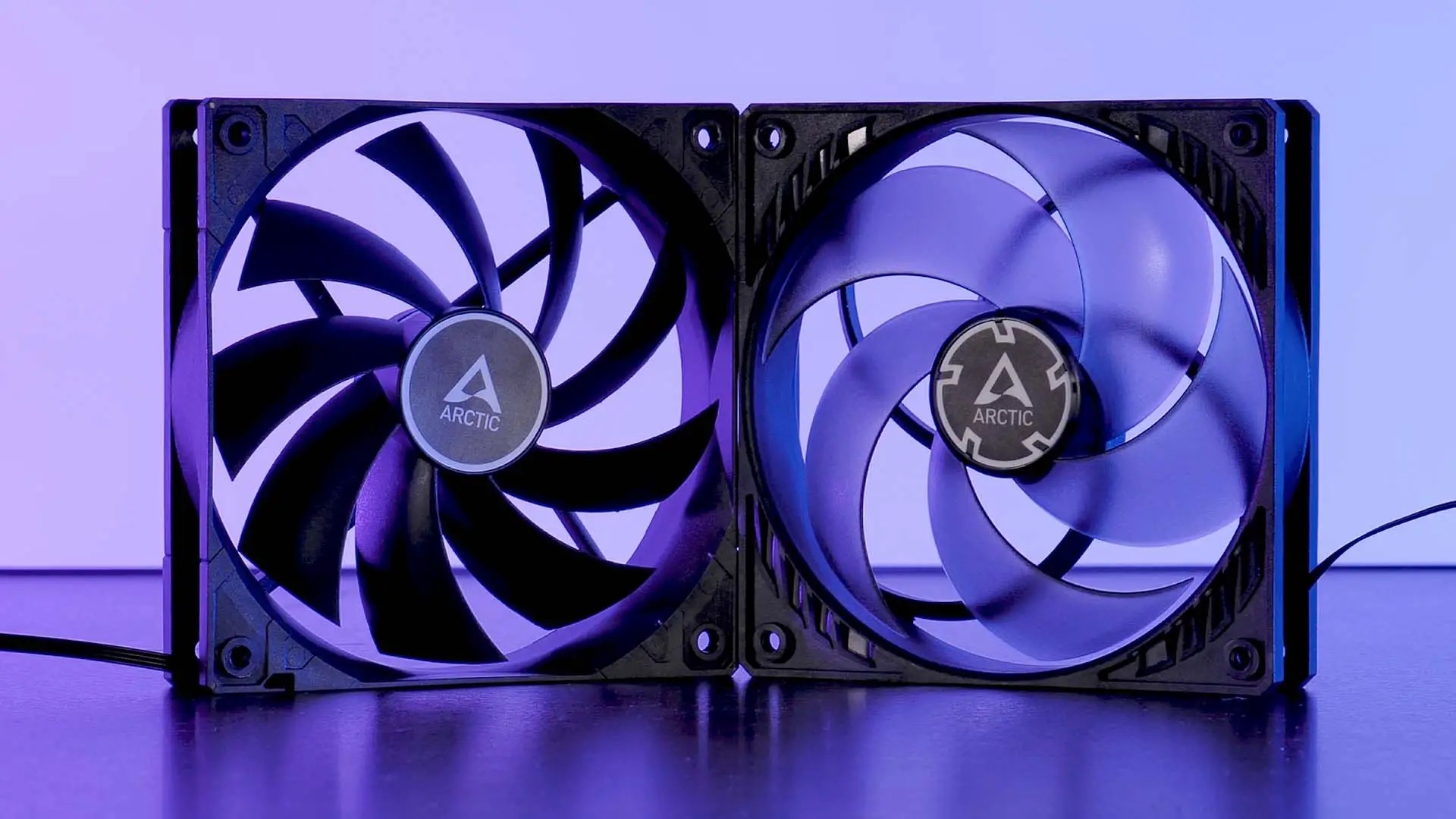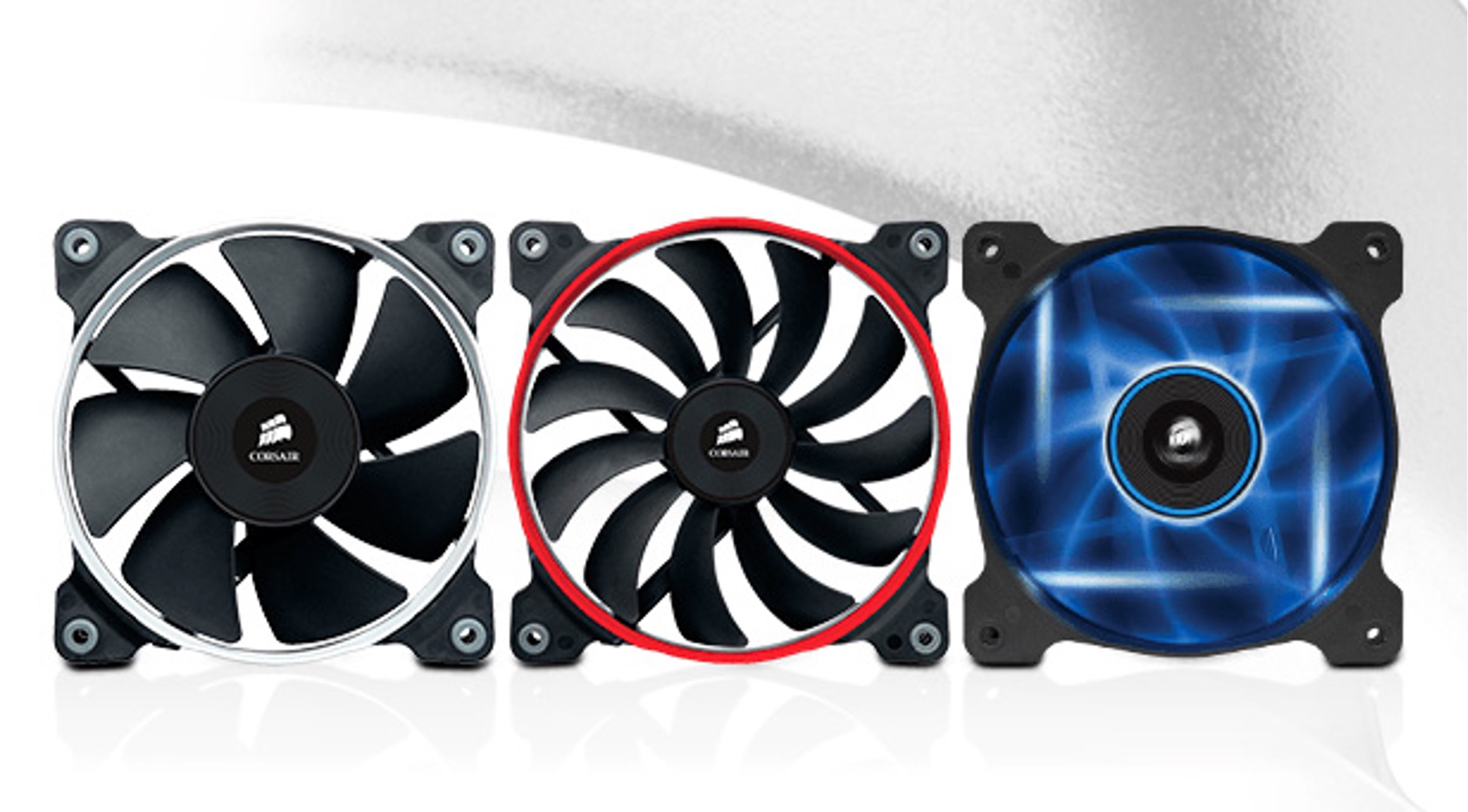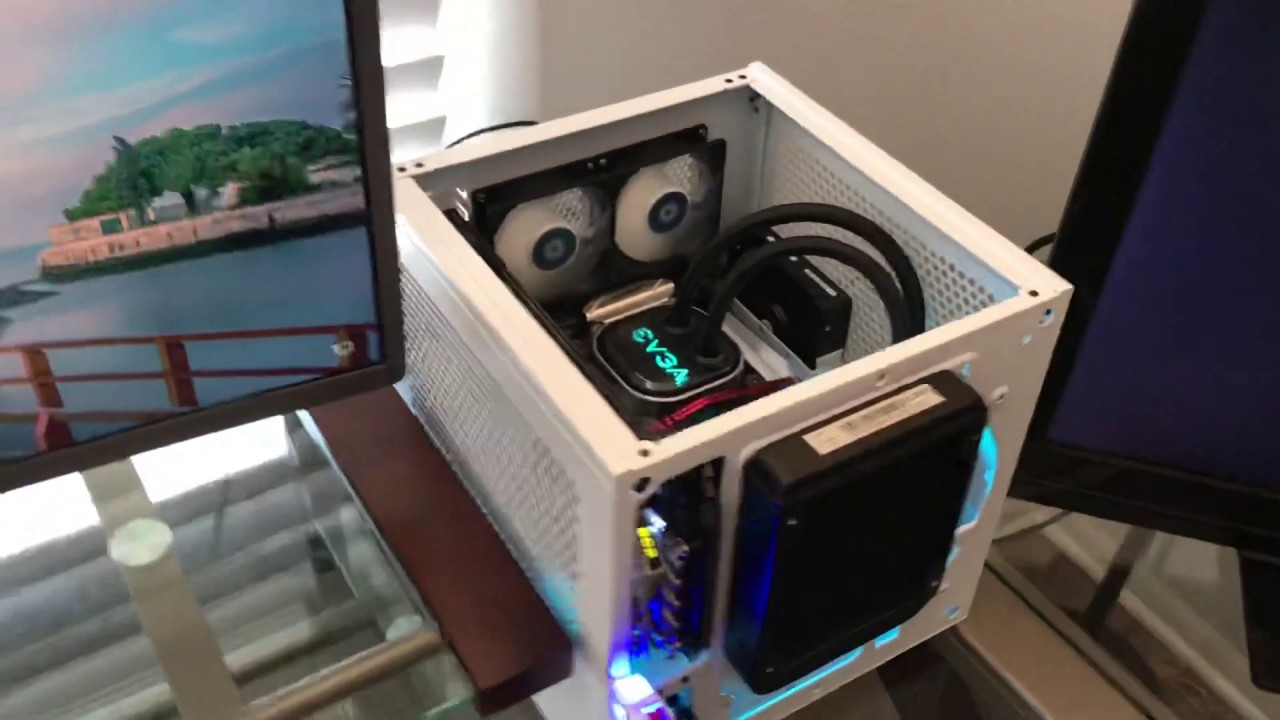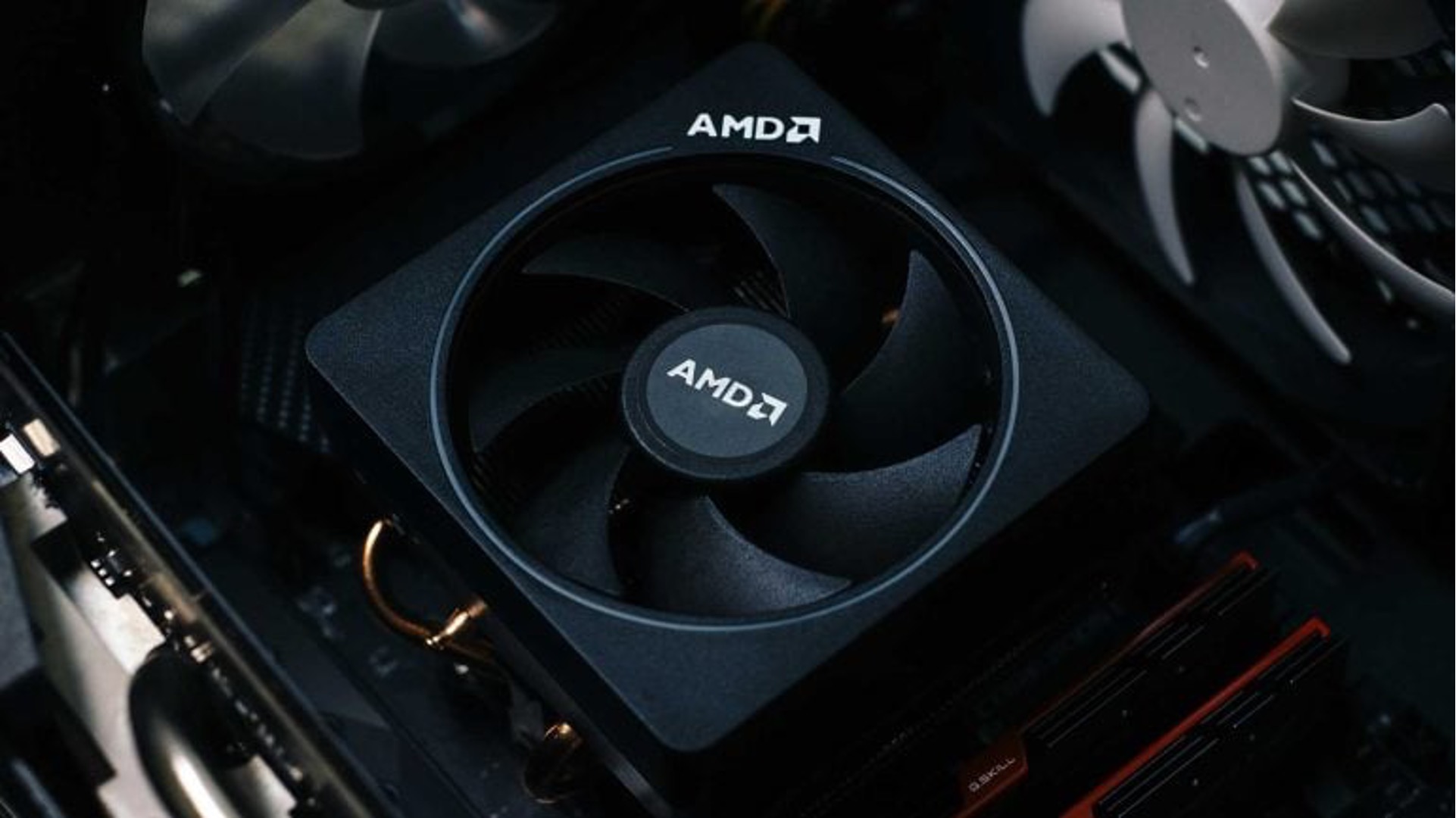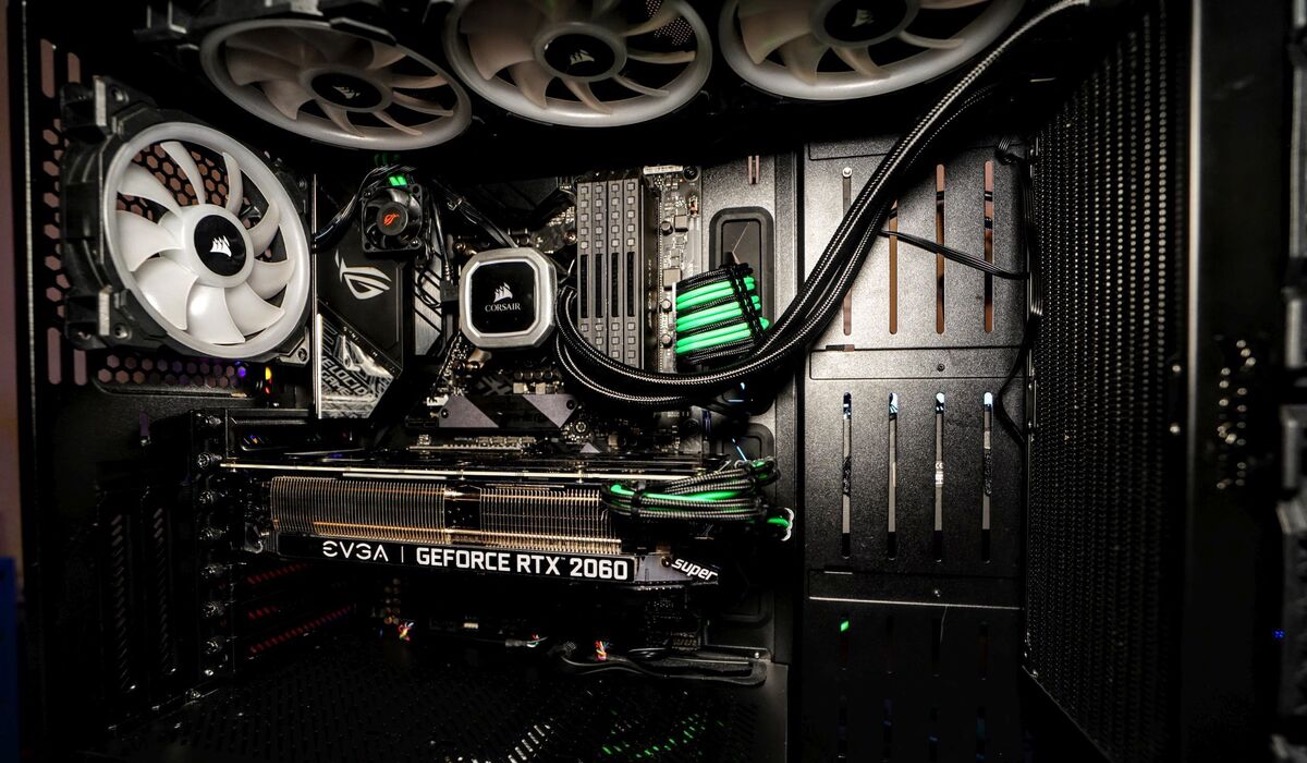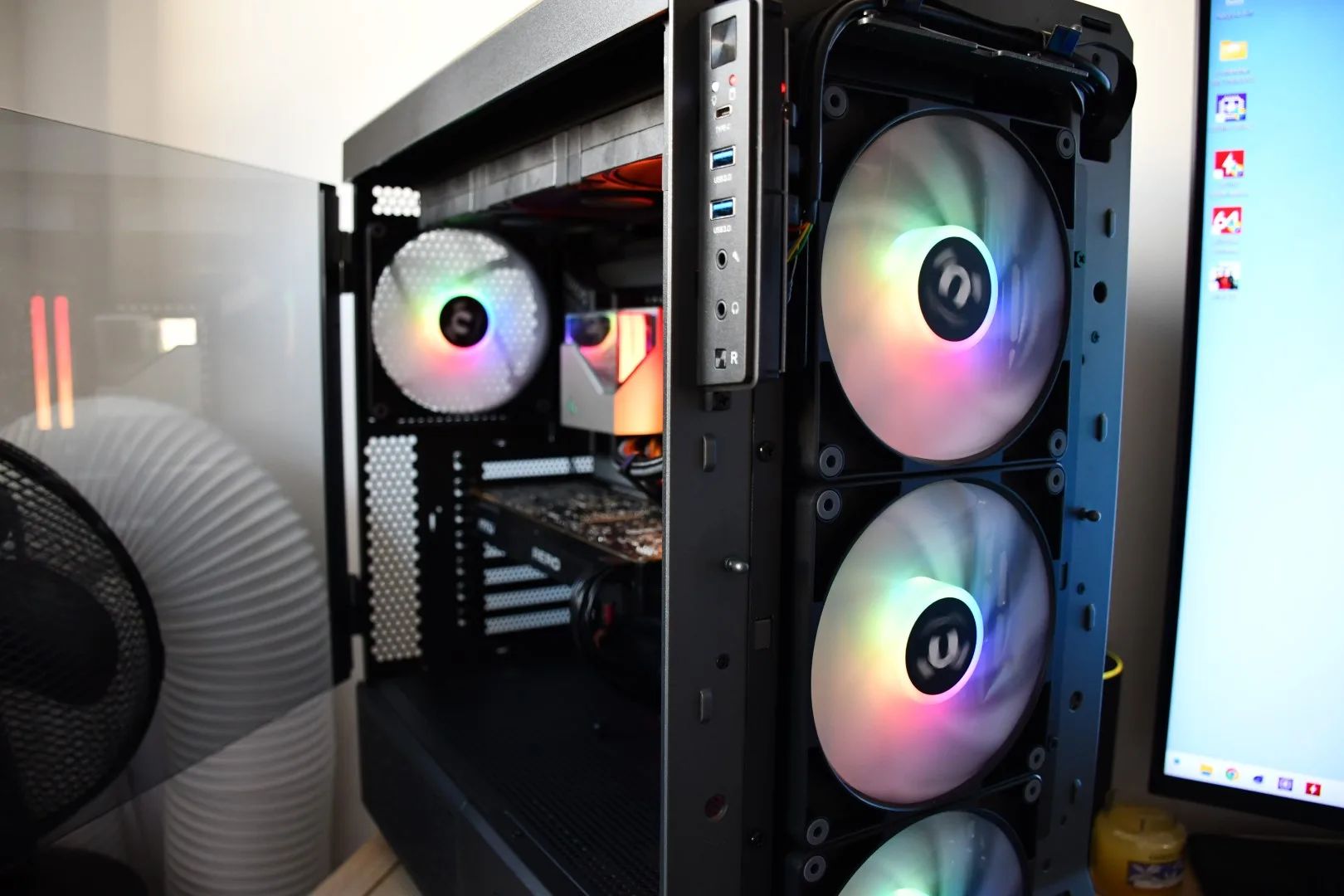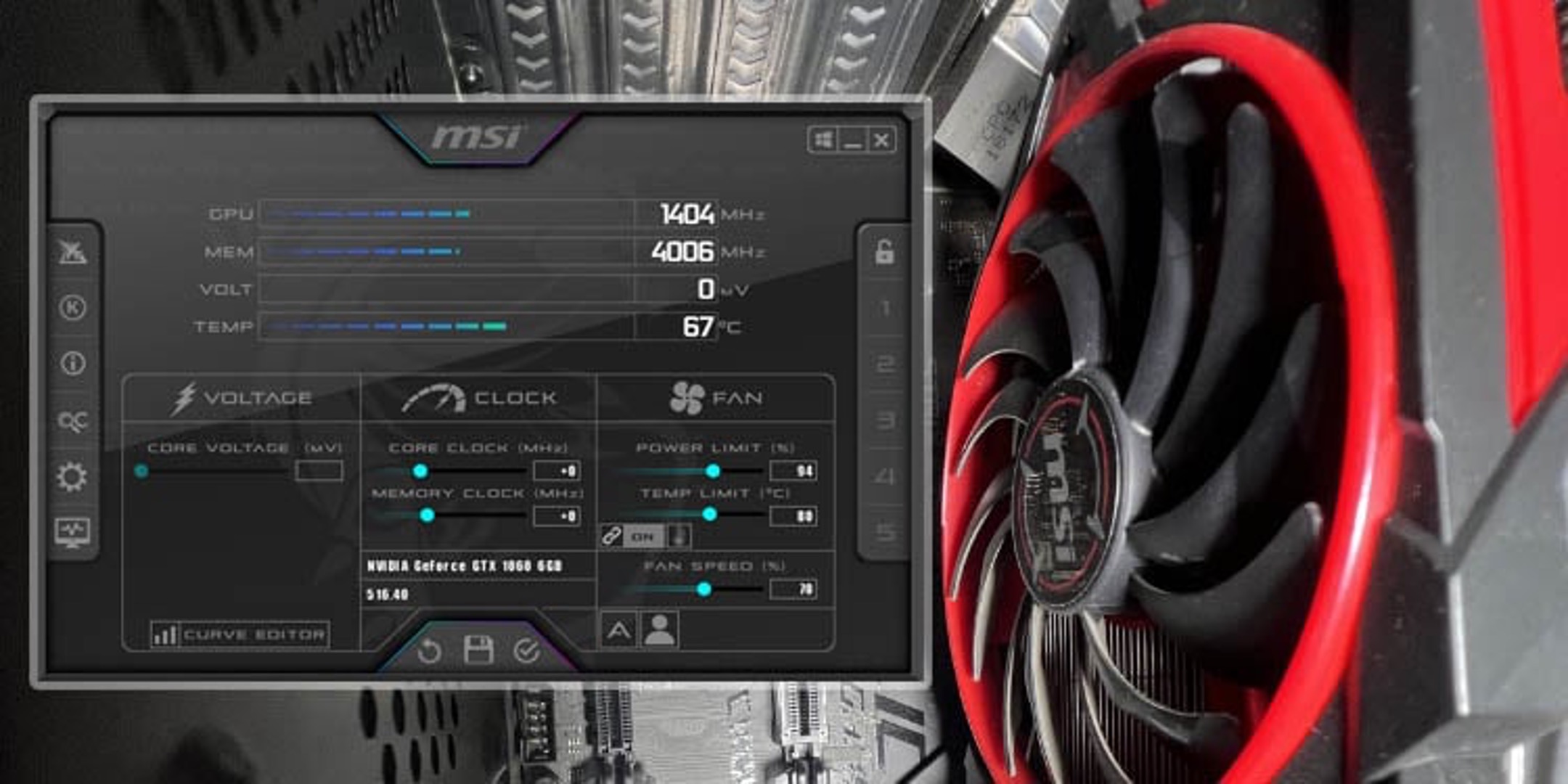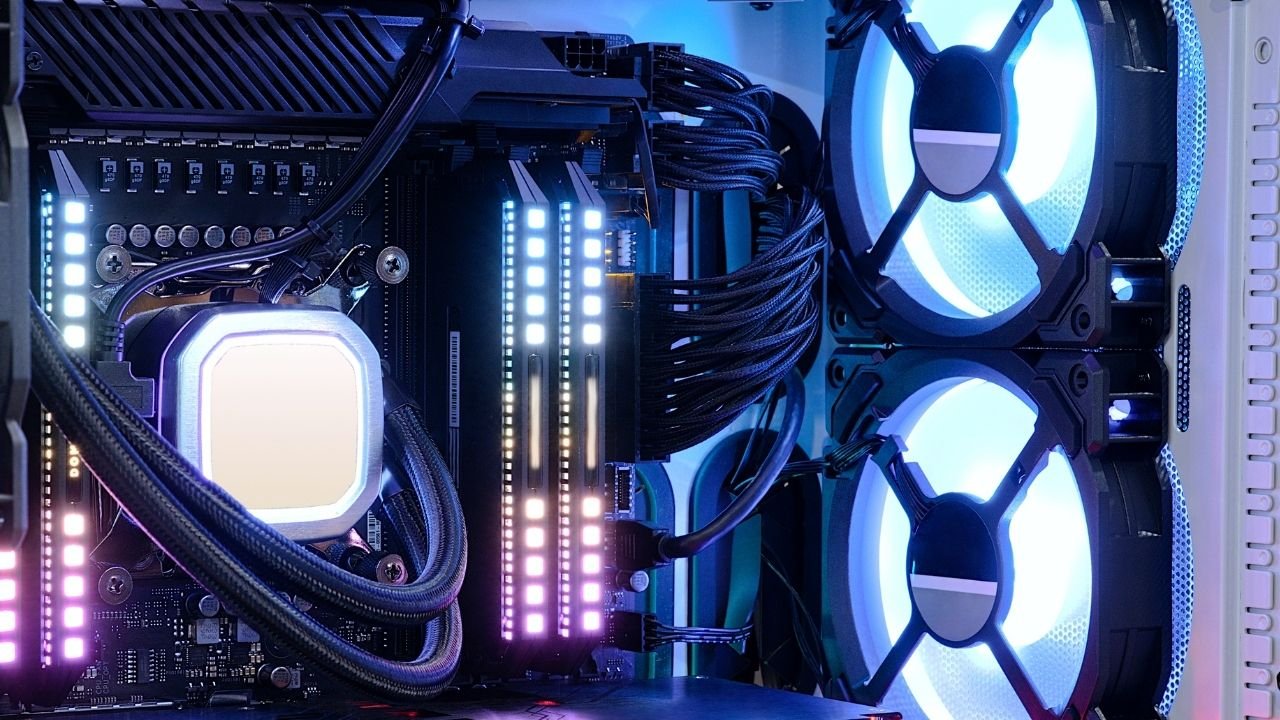Introduction
Welcome to our guide on how to adjust case fan speeds. When it comes to optimizing the performance and longevity of your computer, proper cooling is essential. Case fans play a crucial role in dissipating heat generated by internal components, ensuring a stable and efficient system. However, default fan speeds may not always provide optimal cooling under varying load conditions. That’s where the ability to adjust fan speeds comes into play.
By adjusting fan speeds, you have the power to customize your computer’s cooling capabilities, achieving a balance between noise levels and temperature control. Whether you’re an avid gamer, a creative professional, or simply a power user, knowing how to modify case fan speeds can greatly enhance your computing experience.
In this comprehensive guide, we will explore different methods of adjusting case fan speeds, including software-based fan control, BIOS-based fan control, and fan controllers. We will also discuss the importance of adjusting fan speeds and the different types of case fans available in the market. So, let’s dive right in and unlock the secrets to optimizing your computer’s cooling performance!
Why Adjusting Case Fan Speeds is Important
Proper cooling is vital for optimal performance and longevity of your computer. When components inside your computer generate heat, it needs to be efficiently dissipated to prevent overheating. This is where case fans come into play, as they help circulate air and maintain a stable operating temperature.
Adjusting case fan speeds is important for several reasons:
- Temperature Control: By adjusting fan speeds, you can effectively manage the airflow inside your computer case. During intensive tasks like gaming or video editing, components tend to generate more heat. Increasing fan speeds during these activities can help maintain lower temperatures and prevent performance throttling or system shutdowns due to overheating.
- Noise Reduction: By default, case fans may run at maximum speed, resulting in excessive noise levels. However, not everyone wants their computer to sound like a jet engine. By adjusting fan speeds, you can find a balance between cooling performance and noise reduction, ensuring a more pleasant and quieter computing experience.
- Customization: Every computer system is unique, with varying hardware configurations and cooling requirements. Adjusting fan speeds allows you to tailor the cooling solution to your specific needs. By optimizing the airflow according to your system requirements, you can achieve better cooling efficiency and extend the lifespan of your components.
It is important to note that while adjusting fan speeds offers benefits, it’s crucial to strike a balance. Running fans at extremely low speeds may result in inadequate cooling and potential damage to sensitive components. Conversely, running fans at excessively high speeds can result in increased noise levels and unnecessary wear on the fans themselves.
In the following sections, we will explore different methods to adjust case fan speeds, providing you with the knowledge and tools needed to achieve optimal cooling performance for your computer. From software-based fan control to BIOS-based options and dedicated fan controllers, we’ll cover it all. So, let’s proceed to the next section and discover how to take control of your computer’s cooling system!
Types of Case Fans
Case fans come in various sizes and designs, each serving a specific purpose in maintaining a cool and efficient computer system. Understanding the different types of case fans available can help you choose the best option for your specific cooling needs. Let’s take a closer look at some common types of case fans:
- 120mm Case Fans: These are the most common and widely used case fans. They strike a good balance between size, performance, and noise levels. 120mm case fans are suitable for most computer cases and provide efficient airflow to cool components effectively.
- 140mm Case Fans: These fans offer larger blades and can move more air compared to their 120mm counterparts. 140mm case fans are generally quieter while delivering excellent cooling performance. They are ideal for larger cases or systems that require high airflow.
- RGB Fans: RGB (Red, Green, Blue) fans are not just about cooling; they also add a visually appealing touch to your computer. These fans feature integrated LED lighting, allowing you to customize and synchronize the colors and lighting effects to match your preferences or create an eye-catching setup.
- Slim Fans: Slim case fans are designed for systems with limited space or slim form factors. These fans typically have smaller dimensions and are suitable for compact cases and low-profile CPU coolers or graphics cards. While they may not provide the same airflow as larger fans, slim fans can still be effective in cooling smaller systems.
- High Static Pressure Fans: These fans are designed to provide concentrated airflow in situations where there are obstacles or restrictions to the airflow path. High static pressure fans are commonly used for cooling radiators, heatsinks, or cases with dense air filters. They excel in providing focused cooling where airflow needs to pass through tight spaces.
It’s worth noting that case fans can also vary in terms of bearing type, such as sleeve bearing, ball bearing, or fluid dynamic bearing. Each bearing type affects fan performance, noise levels, and longevity. When selecting case fans, consider factors such as the size of your computer case, airflow requirements, noise preferences, and any specific cooling challenges you may face.
Now that you have a better understanding of the different types of case fans available, let’s move on to the next section, where we’ll explore methods to adjust case fan speeds and take control of your computer’s cooling performance.
Methods to Adjust Case Fan Speeds
There are several methods available to adjust case fan speeds, allowing you to customize your computer’s cooling performance according to your specific needs. Let’s explore some of the common methods:
- Software-based Fan Control: Many motherboards and graphics cards come with software utilities that allow you to control fan speeds. These utilities provide a user-friendly interface where you can adjust fan speeds, set fan curves, and monitor temperatures. They often offer options to switch between different operating modes, such as quiet or performance profiles, giving you flexibility in balancing cooling performance and noise levels.
- BIOS-based Fan Control: The BIOS (Basic Input/Output System) of your motherboard may also offer fan control options. Accessing the BIOS settings allows you to customize fan speeds and create fan curves based on temperature thresholds. BIOS-based fan control is particularly useful if you prefer a more hands-on approach or if your motherboard doesn’t come with dedicated fan control software.
- Fan Controllers: Fan controllers are standalone devices that offer precise control over multiple case fans. They typically feature knobs, buttons, or touchscreens, enabling you to manually adjust fan speeds as per your requirements. Some fan controllers also offer advanced features like temperature sensors, RPM monitoring, and the ability to create custom fan profiles. Fan controllers are a great option for users who prefer physical control over their fan speeds and want to manage multiple fans simultaneously.
When adjusting case fan speeds, it’s essential to find the right balance between cooling performance and noise levels. Keep in mind that running fans at higher speeds can provide better cooling, but it may result in increased noise output. Conversely, running fans at lower speeds can reduce noise, but it may compromise the cooling efficiency. Experimentation and monitoring temperatures are key to finding the optimal fan speeds for your specific setup.
Additionally, you may also consider using fan speed adapters or fan splitters to control fan speeds. Fan speed adapters reduce the voltage supplied to the fans, effectively slowing them down. Fan splitters, on the other hand, allow you to connect multiple fans to a single fan header on your motherboard or fan controller.
Now that you have a grasp of the different methods available to adjust case fan speeds, you can choose the most suitable option based on your preferences, system configuration, and desired level of control over cooling performance. In the next sections, we will delve deeper into software-based fan control, BIOS-based options, and dedicated fan controllers. So, let’s proceed to the respective sections to discover how to fine-tune your computer’s cooling system!
Software-based Fan Control
Software-based fan control provides an intuitive and convenient way to adjust case fan speeds through dedicated software utilities. Many motherboard and graphics card manufacturers offer their own software that allows you to monitor and control fan speeds effectively. Here’s how software-based fan control works:
1. Installation: Start by downloading and installing the software provided by the manufacturer of your motherboard or graphics card. The software is usually available on the manufacturer’s website under the support or downloads section.
2. Fan Curve Customization: Once installed, open the software and navigate to the fan control section. Here, you can often see a graphical representation of the fan curve. The fan curve depicts the relationship between temperature and fan speed. By adjusting the points on the curve, you can define how the fan speeds should change based on temperature.
3. Fan Speed Adjustment: Using the graphical interface, you can easily modify the fan curve to your liking. For example, you can set the fans to run at a higher speed when the temperature exceeds a certain threshold or keep them at a lower speed when the system is idle or under light load. Some software also offers predefined profiles, such as “silent” or “performance,” allowing you to quickly switch between different fan settings.
4. Temperature Monitoring: Software-based fan control often includes temperature monitoring features. This enables you to monitor the temperatures of various components, such as the CPU, GPU, and motherboard. By keeping an eye on the temperatures, you can fine-tune the fan curves to provide optimal cooling performance while keeping the noise levels in check.
5. Customization and Synchronization: Depending on the software, you may have additional customization options, such as RGB lighting control, system performance monitoring, or even the ability to sync the fan speeds and lighting effects across multiple compatible devices. These features allow you to create a cohesive and personalized computing experience.
Software-based fan control offers a convenient way to adjust case fan speeds without the need for additional hardware. It provides flexibility and ease of use, allowing you to fine-tune your cooling performance according to your specific preferences and requirements.
Keep in mind that software-based fan control may vary depending on the manufacturer, motherboard model, or graphics card you are using. It’s essential to consult the user manual or online documentation provided by the manufacturer for guidance on using the software and accessing the fan control features.
In the following sections, we will explore other methods of adjusting case fan speeds, including BIOS-based fan control and dedicated fan controllers. Let’s proceed to the respective sections to gain a comprehensive understanding of each method and find the one that suits your needs!
BIOS-based Fan Control
BIOS-based fan control is an alternative method to adjust case fan speeds, which allows you to customize fan settings directly through your computer’s BIOS (Basic Input/Output System) settings. Here’s how you can utilize BIOS-based fan control:
1. Accessing BIOS Settings: Restart your computer and enter the BIOS settings by pressing a specific key during boot-up. The key to access the BIOS may vary depending on the motherboard manufacturer, but commonly used keys include DEL, F2, or F12. Refer to your motherboard’s manual or the manufacturer’s website for the specific key or combination of keys.
2. Locating Fan Control Settings: Once in the BIOS settings, navigate to the hardware monitoring or fan control section. The exact location and labeling may vary depending on your motherboard manufacturer and BIOS version.
3. Fan Speed Adjustment: Within the fan control settings, you will typically find options to adjust fan speeds. Some motherboards provide predefined fan speed profiles, such as silent, balanced, and performance. These profiles offer preset fan curves based on specific temperature thresholds.
4. Creating Custom Fan Curves: If preset profiles are not available, you can usually create custom fan curves by adjusting fan speeds based on temperature thresholds. This allows you to fine-tune the fan speeds to your liking. For example, you can set the fans to run at maximum speed when the temperature exceeds a certain threshold or keep them at lower speeds during idle or light load situations.
5. Saving and Applying Changes: Once you have modified the fan speed settings to your preference, save the changes and exit the BIOS settings. The new fan settings will be applied upon restarting your computer.
BIOS-based fan control offers a more hands-on approach to adjusting case fan speeds. It allows you to customize fan settings directly at the firmware level, ensuring consistent and reliable performance across different operating systems and software environments.
Keep in mind that the options and features available in the BIOS settings may vary depending on your motherboard manufacturer and BIOS version. It’s important to consult your motherboard’s manual or the manufacturer’s website for specific instructions and guidance on using the BIOS-based fan control features.
In the next section, we will explore dedicated fan controllers, which provide even greater control and flexibility over case fan speeds. Let’s proceed to discover how dedicated fan controllers can enhance your cooling system management!
Fan Controllers
Fan controllers offer a dedicated and comprehensive solution for adjusting case fan speeds. These standalone devices provide precise control over multiple fans, allowing you to fine-tune cooling performance to meet your specific requirements. Here’s everything you need to know about fan controllers:
1. Installation: To utilize a fan controller, you will need to install it in your computer case. Fan controllers typically come in the form of a front panel or a separate module that fits into an available drive bay. Installation procedures may vary, so it’s important to refer to the manufacturer’s instructions.
2. Connecting Fans: Once installed, connect the case fans to the fan controller using the provided cables. Most fan controllers offer multiple fan headers, allowing you to connect and control several fans simultaneously. Some controllers even support different fan sizes, such as 3-pin or 4-pin fans, providing flexibility for your fan configuration.
3. Manual Fan Speed Adjustment: Fan controllers offer physical controls, such as knobs, buttons, or touchscreens, to manually adjust the fan speeds. These controls allow you to increase or decrease fan speeds according to your preferences. Some fan controllers also include indicators or displays to show the current fan RPM or temperature readings for better monitoring.
4. Advanced Features: Fan controllers may come equipped with additional features like temperature sensors, RPM monitoring, and the ability to create custom fan profiles. Temperature sensors can be placed in strategic locations within the case to provide real-time temperature readings. RPM monitoring allows you to keep track of the fan speeds, ensuring optimal cooling performance. Custom fan profiles allow you to define specific fan speed settings based on temperature thresholds or specific needs.
5. Fan Controller Software: Some fan controllers may also come with software utilities that allow you to control and monitor fan speeds through a computer interface. This software enables more detailed customization and offers additional features like syncing fan speeds with system temperature or creating complex fan profiles.
Fan controllers provide a high level of control and flexibility over case fan speeds. They are especially beneficial for users who prefer physical controls and want to manage multiple fans simultaneously. With the ability to adjust fan speeds manually and access advanced features like temperature monitoring and custom fan profiles, fan controllers offer a comprehensive solution for achieving optimal cooling performance.
It’s important to choose a fan controller that matches your specific needs and requirements. Consider factors such as the number of fan headers, compatibility with your fan types, and any additional features that you find useful.
Now that we’ve explored the methods of adjusting case fan speeds, including software-based control, BIOS-based control, and dedicated fan controllers, you have a variety of options to choose from. In the next section, we’ll provide some important considerations and tips to help you make the most of your fan speed adjustments. Let’s proceed to the final section!
Considerations and Tips
When adjusting case fan speeds, there are several factors to consider to ensure optimal cooling performance and a balanced system. Here are some important considerations and tips to keep in mind:
- Temperature Monitoring: Regularly monitor the temperatures of your system components to ensure they stay within safe limits. This will help you determine whether the current fan speeds are sufficient or if adjustments are necessary.
- Experimentation: Finding the perfect balance between cooling performance and noise levels may require some experimentation. Adjust the fan speeds gradually and observe the impact on temperatures and noise levels to determine the optimal settings for your specific setup.
- Synchronization: If you have RGB fans or other RGB components, consider synchronizing the fan speeds and lighting effects for a cohesive and visually appealing look. Many software utilities and fan controllers offer synchronization features to create a cohesive lighting experience.
- Positive Pressure: Aiming for a slightly positive pressure inside your case can help prevent dust buildup. By having slightly more intake airflow than exhaust, you ensure that air is pushed out through the various openings rather than being drawn in through unfiltered areas.
- Fan Placement and Configuration: Consider the placement and configuration of your fans to optimize airflow. Intake fans positioned at the front or bottom of the case, and exhaust fans at the rear or top, can help create a smooth and efficient airflow path.
- Cable Management: Proper cable management can contribute to improved airflow within your case, allowing the fans to function more effectively. Arrange cables neatly and use cable ties or Velcro straps to keep them organized and out of the way of the fans and airflow paths.
- Cleaning and Maintenance: Regularly clean your case fans to remove accumulated dust and debris. Dust buildup can impede airflow, resulting in decreased cooling performance. Use compressed air or a soft brush to gently clean the fan blades and ensure smooth operation.
Remember, the goal is to achieve a balance between effective cooling and acceptable noise levels. What works well for one setup may not be ideal for another. Experimentation and fine-tuning based on your specific components, cooling requirements, and personal preferences are key to achieving optimal results.
By considering these tips and taking a proactive approach to managing your case fan speeds, you can ensure a well-cooled and efficient computer system, allowing you to enjoy enhanced performance and longevity of your components.
Now that we have covered the considerations and tips for adjusting case fan speeds, you are equipped with the knowledge to optimize your computer’s cooling performance. Whether you choose software-based control, BIOS-based control, or a dedicated fan controller, understanding these considerations will help you make informed decisions. So go ahead and fine-tune your cooling system to achieve the best possible performance for your setup!
Conclusion
Adjusting case fan speeds is a crucial aspect of optimizing the performance and longevity of your computer system. By finding the right balance between cooling performance and noise levels, you can enjoy a stable and efficient computing experience. Throughout this guide, we have explored various methods to adjust case fan speeds, including software-based control, BIOS-based control, and dedicated fan controllers.
Software-based fan control offers convenience and flexibility, allowing you to adjust fan speeds through user-friendly software utilities provided by motherboard or graphics card manufacturers. BIOS-based fan control, on the other hand, provides a more hands-on approach, allowing direct customization of fan settings through the computer’s BIOS interface. Dedicated fan controllers offer precise control over multiple fans, providing physical adjustments and advanced features like temperature monitoring and custom fan profiles.
Whichever method you choose, it’s important to consider factors such as temperature monitoring, experimentation, synchronization, positive pressure, fan placement and configuration, cable management, and regular cleaning and maintenance. These considerations ensure that you achieve optimal cooling and a well-balanced system.
By adjusting case fan speeds, you can achieve lower temperatures, prevent overheating, reduce noise levels, and extend the lifespan of your components. Remember, the key is to find the right balance for your specific setup and requirements.
We hope this guide has provided you with valuable insights and guidance on adjusting case fan speeds. Now, armed with this knowledge, you can confidently take control of your computer’s cooling performance and enjoy a more efficient and enjoyable computing experience.
So go ahead, explore the methods and tips discussed in this guide, and optimize your case fan speeds to unleash the full potential of your computer system!







